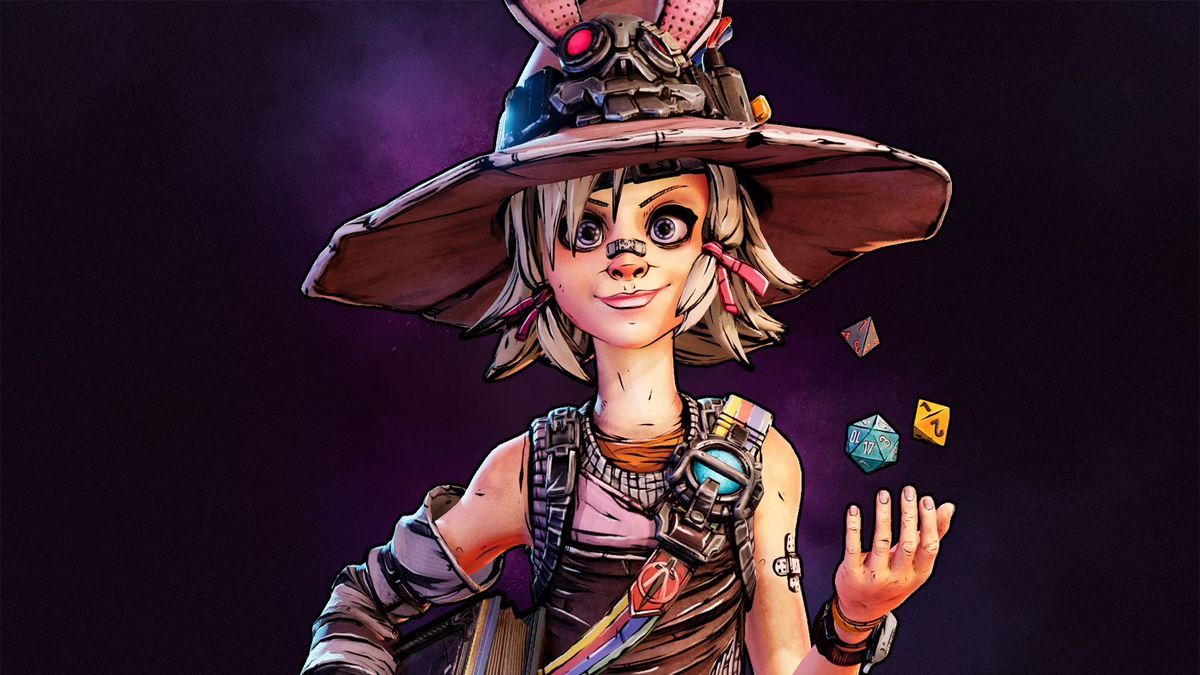A fantasy forest straight out of the Forgotten Realms stretches before you, this picturesqueness vista broken only by… a colossal upturned soda can? This is Tiny Tina’s Wonderlands, in which Gearbox is trying to sell a game-within-a-game bit—the idea that players are in the Borderlands playing a roleplaying game, both sitting around a table and inhabiting the secondary imagined world of Tiny Tina’s game. It’s almost like being in the Animus from Assassin’s Creed (though hopefully less of a drag.)
To that end, Gearbox has included some of the “real world” detritus of characters from the Borderlands layer of the fiction as obstacles in your fantasy world, including the aforementioned soda can waterfall, as well as dice and imposing cheese puff impediments. I was charmed by this idea: a shrink-ray tiny world reminiscent of de_rats from Counter-Strike or The Legend of Zelda: The Minish Cap.
Gearbox’s upcoming follow-up to Borderlands 3, a spin-off standalone that builds on one of the best Borderlands DLCs, takes its RPG and tabletop inspirations to heart. I had the opportunity to sit down with the project’s creative director Matt Cox, art director Adam May, and senior level designer Gabriel Robitaille to talk about those inspirations and their impact on the game.
All three made clear their desire to translate Borderlands’ looter-shooter gameplay loop to a nostalgic, RPG-like structure, with the shooter sections spread across an explorable world map reminiscent of Dragon Quest or Final Fantasy. They wanted to set a real contrast between the more familiar gunfight levels and the overworld. Getting the vibe right was of huge importance to Gearbox: the studio experimented with multiple art styles, including a watercolor approach and a rad-sounding perspective that unfortunately resulted in some usability issues, according to Cox.
“I even tried very early on to do tilt-shift photography as a way to make the 3D world look like a miniature,” he said, “but since we wanted the player to still have the ability to turn the camera, I learned the hard way if you try to rotate the camera around tilt-shift photography, it makes you very sick! I got sick for four to five hours the day I tried it.”
Gearbox ultimately settled on the version we can expect to see in the finished game, one reminiscent of a high-end wargaming board with a more exaggerated style (including bobbleheaded, toy-like character models) than the pseudo-cel-shaded shooter levels.
Beyond just having a cute aesthetic, the map’s travel sections will also shake up Borderlands’ established open-world, vehicle-based cadence. Cox was coy about specifics, but seemed to indicate actions within levels would alter the overworld, adding an element of reactivity to it.
Robitaille and May also described JRPG-style random encounters on the world map in the form of one-off combat arenas, but seemed aware of the reputation random encounters have. They were quick to qualify these encounters would have enticing rewards and that there would be a high degree of agency in whether players engage with or avoid them.
May also provided one of the most interesting titbits about the gameplay side of things, at least from my perspective. “There’s straight-up giant huge first-person maps that you don’t even unlock unless you do quests in the overworld,” he said. “They’re some of the best we have so I really hope people are doing side quests!”
That definitely piqued my interest. Being a fan of RPGs and Soulsbornes, I’m a sucker for when a lot of work goes into something players might never see. That, as well as the other additions Gearbox described, suggests to me the well-established looter-shooter formula of Borderlands could be about to receive a refreshing change.
Tiny Tina’s Wonderlands is due to release on March 25, 2022.
